
The best leadership books offer invaluable insights and practical strategies for individuals aspiring to lead effectively in work, life, and society.
Leadership isn’t just about managing teams, it’s about steering the course of your work, personal lives, and the society you live in.
In this article, we unveil the 12 Best Leadership Books that promise to illuminate the path of leadership. Though here you can find 1,000 of influential book summaries.
Let’s delve into the essence of each recommendation, unveiling the keys to unlocking leadership excellence.
“Leadership is the capacity to translate vision into reality.”
– Warren Bennis
A Quick List
In case if you want to cut through the details and straight jump into the book recommendations then here’s the entire list of the best leadership books of all time.
- “Leaders Eat Last” by Simon Sinek
- “Dare to Lead” by Brené Brown
- “Good to Great” by Jim Collins
- “The 7 Habits of Highly Effective People” by Stephen R. Covey
- “Primal Leadership: Unleashing the Power of Emotional Intelligence” by Daniel Goleman, Richard Boyatzis, and Annie McKee
- “Drive: The Surprising Truth About What Motivates Us” by Daniel H. Pink
- “Start with Why: How Great Leaders Inspire Everyone to Take Action” by Simon Sinek
- “Leadership and Self-Deception: Getting Out of the Box” by The Arbinger Institute
- “The Five Dysfunctions of a Team: A Leadership Fable” by Patrick Lencioni
- “Extreme Ownership: How U.S. Navy SEALs Lead and Win” by Jocko Willink and Leif Babin
- “The Leadership Challenge: How to Make Extraordinary Things Happen in Organizations” by James M. Kouzes and Barry Z. Posner
- “Lean In: Women, Work, and the Will to Lead” by Sheryl Sandberg
Best Leadership Books You Should Read
You should read the best leadership books because they help you become a better leader.
They teach you important things about leading people and teams. Reading these books can make you smarter and more successful at work.
They can inspire you to be a great leader in your life.
1. “Leaders Eat Last” by Simon Sinek
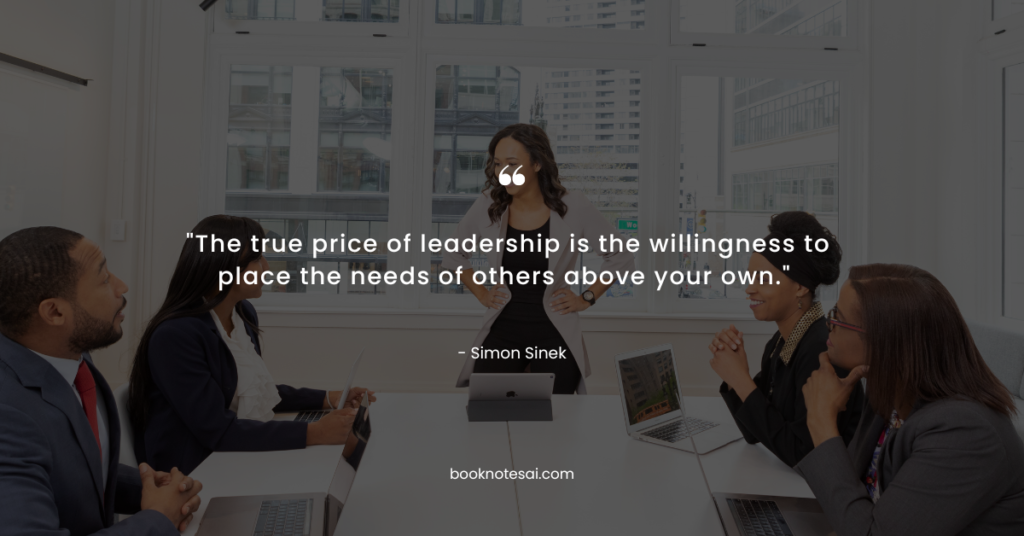
Simon Sinek explores the profound impact of selfless leadership on team dynamics. Through anecdotes and research, he illustrates how prioritizing the well-being of your team fosters trust, collaboration, and a sense of purpose.
Key Ideas:
- Foster trust by prioritizing the welfare of your team.
- Cultivate a collaborative environment through selfless leadership.
- Instill a sense of purpose to drive collective success.
Why Read: In a world often defined by competition, Sinek’s insights provide a refreshing perspective on leadership—showing that true success emerges when leaders prioritize the success and well-being of their teams over individual achievements.
If you believe in the power of selfless leadership and want to cultivate a collaborative, purpose-driven team, delve into the transformative insights of “Leaders Eat Last.”(Read book summary.)
2. “Dare to Lead” by Brené Brown
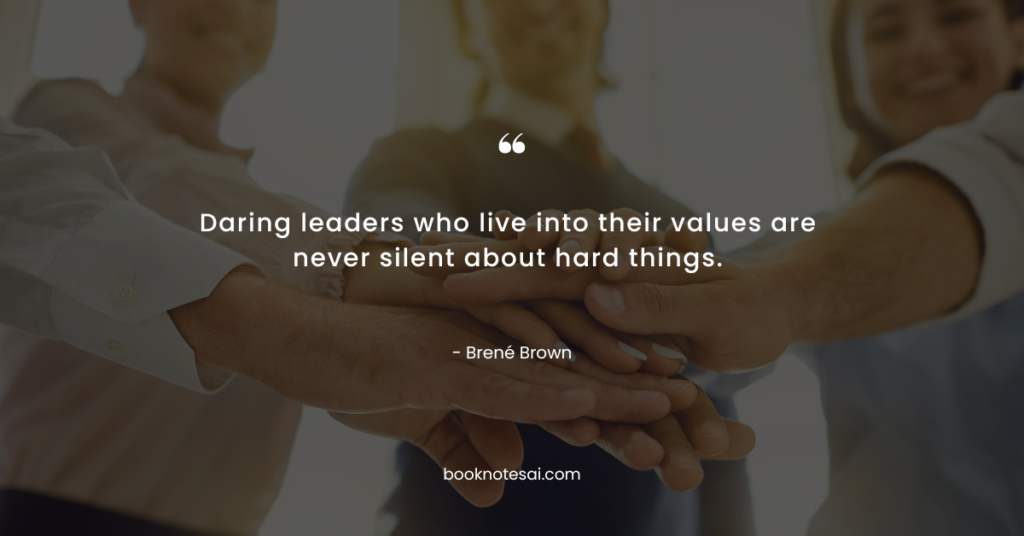
Brené Brown delves into the concept of daring leadership, emphasizing vulnerability as a strength.
Through real-world stories and research, she explores how embracing vulnerability can foster innovation, collaboration, and resilience.
Key Ideas:
- Embrace vulnerability as a key aspect of daring leadership.
- Cultivate innovation by encouraging openness and risk-taking.
- Build resilience within your team through authentic leadership.
Why Read: Brown challenges conventional notions of leadership, showing that vulnerability is not a weakness but a powerful tool for creating meaningful connections and fostering a culture of courage.
“Dare to Lead” is a guide for those who wish to redefine leadership, embracing vulnerability as a catalyst for innovation and resilience in the face of challenges.(Read book summary.)
3. “Good to Great” by Jim Collins
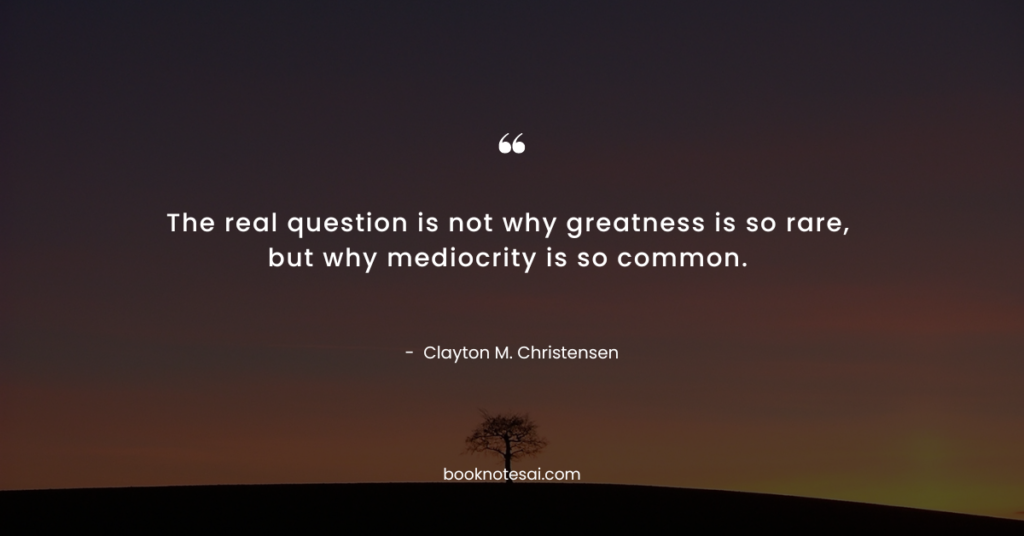
Jim Collins examines what distinguishes great companies from good ones. Through a comprehensive study, he identifies key principles that transform organizations from mediocrity to sustained excellence.
Key Ideas:
- Shift from good to great through disciplined and consistent actions.
- Cultivate a culture of discipline to sustain long-term success.
- Harness the power of the right people in the right positions.
Why Read: “Good to Great” is a roadmap for those aspiring to elevate their organizations to unparalleled success, emphasizing the importance of disciplined actions and strategic decision-making.
For a profound exploration of the principles that elevate companies from good to great, delve into Jim Collins’ transformative insights in “Good to Great.”
(Read book summary.)
4. “The 7 Habits of Highly Effective People” by Stephen R. Covey
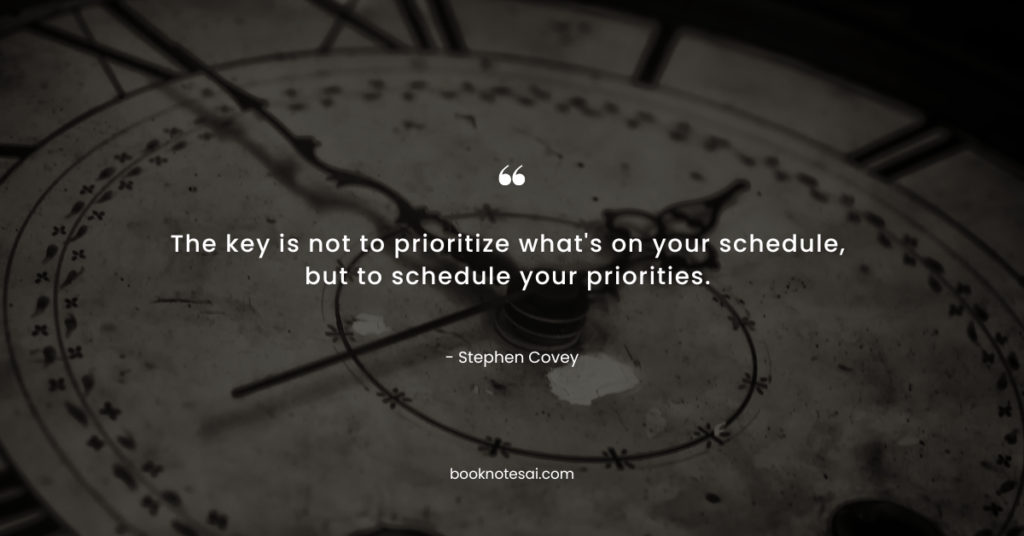
Stephen R. Covey outlines seven timeless habits that lead to personal and professional effectiveness. Grounded in principles of character and ethics, Covey’s approach emphasizes holistic growth and lasting success.
Key Ideas:
- Prioritize tasks based on importance rather than urgency.
- Cultivate synergy through collaboration and collective intelligence.
- Continuously seek personal and professional improvement.
Why Read: “The 7 Habits of Highly Effective People” provides a holistic guide to personal and professional effectiveness, offering a roadmap for achieving lasting success through character-based habits.
Embark on a journey of self-improvement and effectiveness by exploring the timeless principles laid out in Stephen R. Covey’s “The 7 Habits of Highly Effective People.”
(Read book summary.)
5. “Primal Leadership:” by Daniel Goleman, Richard Boyatzis, and Annie McKee

Goleman, Boyatzis, and McKee explore the pivotal role of emotional intelligence in effective leadership.
The book emphasizes how leaders who master their emotions can create a positive, inspiring work environment.
Key Ideas:
- Develop emotional intelligence to enhance leadership effectiveness.
- Create a positive work environment through empathetic leadership.
- Foster resilience and adaptability in times of change.
Why Read: “Primal Leadership” unravels the importance of emotional intelligence in leadership, offering practical insights on how leaders can create a positive and resilient workplace.
If you aspire to become a leader who excels in emotional intelligence and fosters a positive work culture, “Primal Leadership” is an indispensable guide.
(Read book summary.)
6. “Drive: The Surprising Truth About What Motivates Us” by Daniel H. Pink
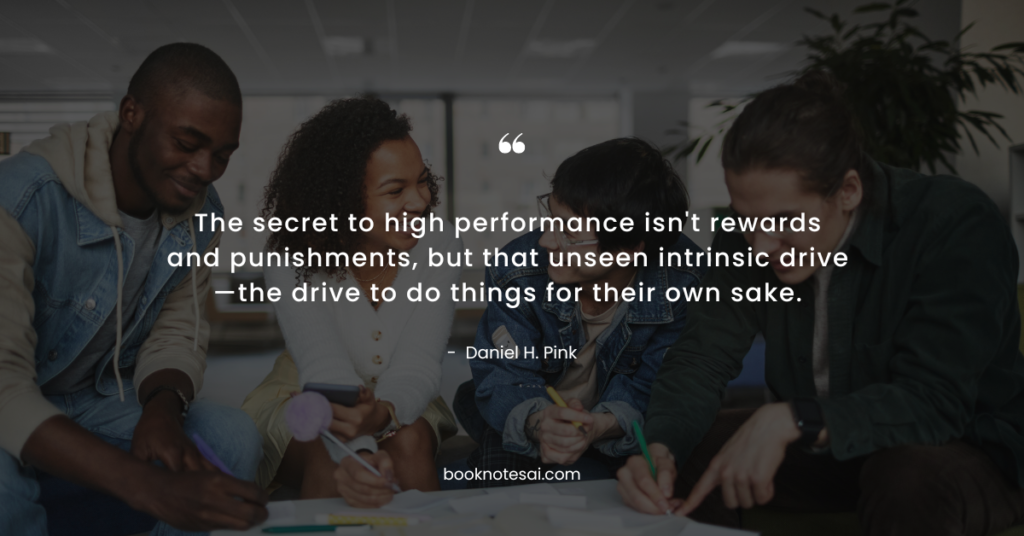
Daniel H. Pink explores the science of motivation, challenging conventional beliefs about what drives human behavior.
The book introduces the concept of autonomy, mastery, and purpose as key motivators for individuals and teams.
Key Ideas:
- Motivate individuals by providing autonomy in their work.
- Encourage continuous learning and mastery for sustained motivation.
- Align tasks with a greater sense of purpose for increased engagement.
Why Read: “Drive” redefines the understanding of motivation, offering a fresh perspective on how leaders can inspire and energize their teams by tapping into intrinsic motivators.
For a paradigm shift in understanding and applying motivation in leadership, delve into the eye-opening insights of Daniel H. Pink’s “Drive.”
(Read book summary.)
7. “Start with Why” by Simon Sinek
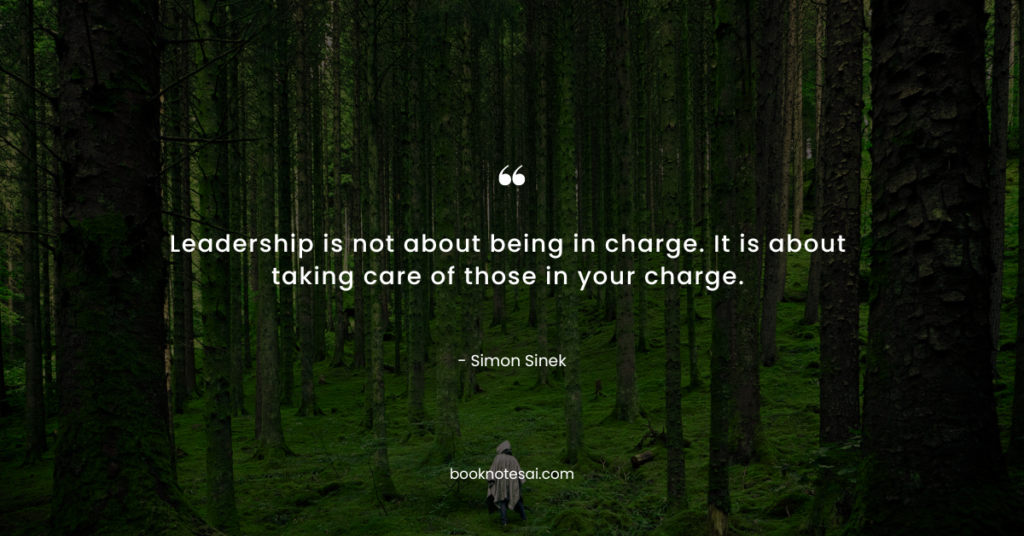
Simon Sinek explores the significance of starting with a clear sense of purpose—the “Why.” Through real-world examples, he demonstrates how great leaders inspire action by communicating their underlying motivations.
Key Ideas:
- Define and communicate the fundamental “Why” behind actions.
- Inspire action by connecting with people on a deeper, emotional level.
- Create a loyal following by aligning values with your organization’s purpose.
Why Read: “Start with Why” is a compelling exploration of the power of purpose in leadership, offering a blueprint for inspiring action and building a dedicated following.
Uncover the transformative potential of purpose-driven leadership by immersing yourself in the profound insights of Simon Sinek’s “Start with Why.”
(Read book summary.)
8. “Leadership and Self-Deception” by The Arbinger Institute
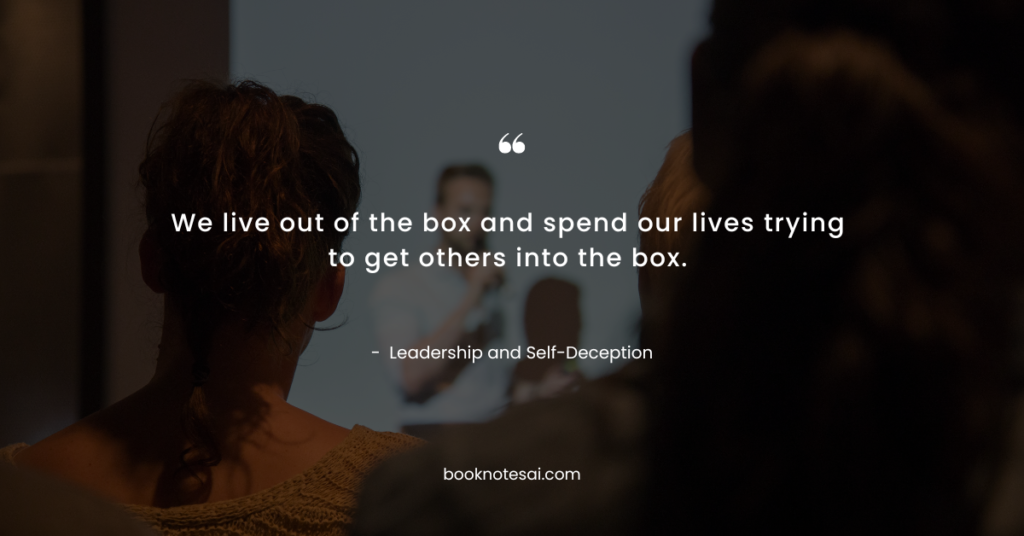
The Arbinger Institute presents a unique perspective on leadership, exploring how self-deception can hinder effective communication and collaboration.
The book guides readers on breaking free from self-imposed limitations.
Key Ideas:
- Recognize and overcome self-deception for improved communication.
- Foster genuine connections by shifting from a self-focused to an outward mindset.
- Break free from limiting perspectives to unlock true leadership potential.
Why Read: “Leadership and Self-Deception” offers a transformative approach to leadership, urging readers to confront their own self-deceptions and fostering a mindset that prioritizes collaboration and understanding.
To unlock your true leadership potential by overcoming self-deception and embracing an outward mindset, delve into the insights presented by The Arbinger Institute in this groundbreaking book.
(Read book summary.)
9. “The Five Dysfunctions of a Team” by Patrick Lencioni
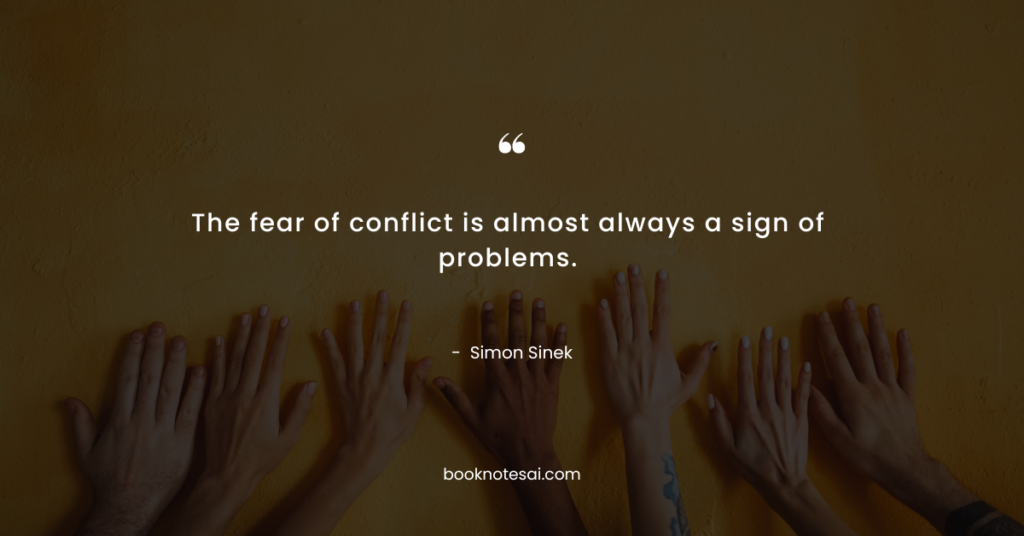
Patrick Lencioni uses a compelling fable to explore the common pitfalls that undermine team effectiveness.
Through storytelling, he illuminates the five dysfunctions and offers strategies for building cohesive and high-performing teams.
Key Ideas:
- Cultivate trust as the foundation of effective teamwork.
- Embrace healthy conflict for constructive decision-making.
- Foster commitment and accountability within the team.
Why Read: “The Five Dysfunctions of a Team” offers valuable insights into the dynamics of team dysfunction, providing practical strategies for building trust, fostering collaboration, and achieving collective success.
For those seeking to transform dysfunctional teams into cohesive and high-performing units, Patrick Lencioni’s insightful fable provides a roadmap for success.(Read book summary.)
10. “Extreme Ownership” by Jocko Willink and Leif Babin
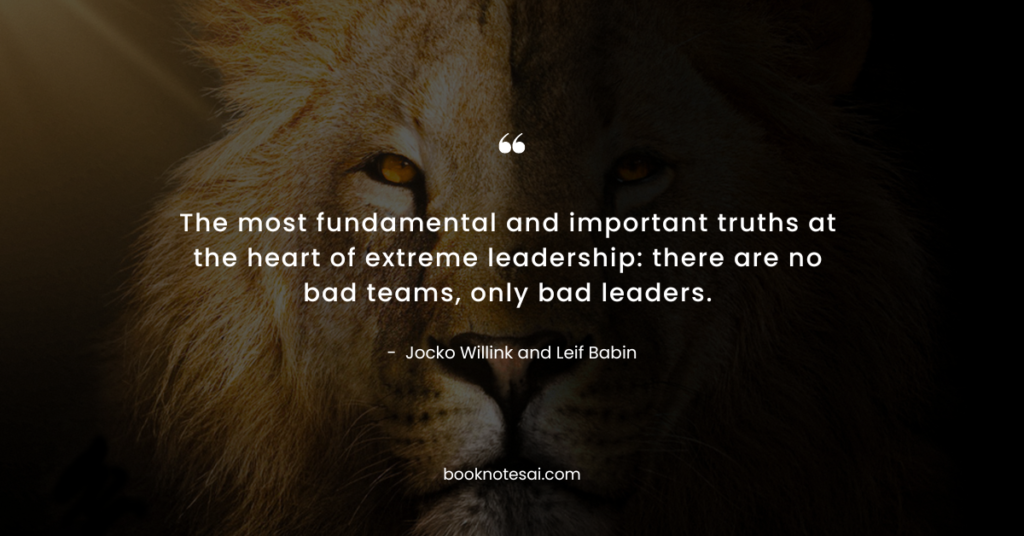
Jocko Willink and Leif Babin draw on their experiences as Navy SEALs to outline principles of extreme ownership in leadership.
Through riveting anecdotes, they demonstrate how taking full responsibility leads to success in any endeavor.
Key Ideas:
- Embrace extreme ownership by taking responsibility for outcomes.
- Lead by example to inspire trust and accountability.
- Encourage decentralized command for empowered decision-making.
Why Read: “Extreme Ownership” offers invaluable lessons in leadership from the battlefield to the boardroom, emphasizing the transformative power of taking ownership and leading with integrity.
For a masterclass in leadership and accountability, dive into the riveting accounts and practical insights offered by Jocko Willink and Leif Babin in “Extreme Ownership.” (Read book summary.)
11. “The Leadership Challenge” by James M. Kouzes and Barry Z. Posner

James M. Kouzes and Barry Z. Posner present a comprehensive framework for effective leadership. Through case studies and research, they highlight the practices that distinguish exemplary leaders and inspire positive change.
Key Ideas:
- Model the way by setting an example of exemplary behavior.
- Inspire a shared vision to unite and motivate teams.
- Encourage the heart by recognizing and celebrating contributions.
Why Read: “The Leadership Challenge” provides a roadmap for aspiring leaders, offering practical strategies and insights to inspire positive change and achieve extraordinary results.
Discover the keys to effective leadership and driving meaningful change within organizations by exploring the transformative insights of James M. Kouzes and Barry Z. Posner. (read book summary.)
12. “Lean In” by Sheryl Sandberg
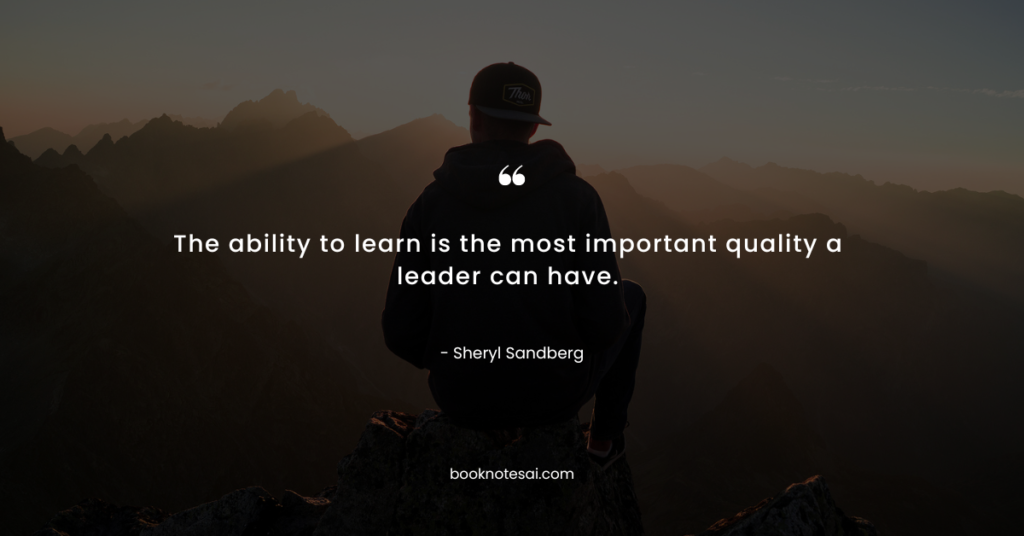
Sheryl Sandberg explores the challenges and opportunities facing women in the workplace. Drawing from her own experiences as COO of Facebook, she offers practical advice and strategies for women to pursue leadership roles and achieve professional success.
Key Ideas:
- Overcome gender biases and stereotypes to assert leadership roles.
- Cultivate resilience and confidence in navigating career challenges.
- Foster supportive networks and mentorship opportunities for women in leadership.
Why Read: “Lean In” is a rallying cry for women to embrace their ambitions, navigate career obstacles, and lean into leadership roles with confidence and determination.
For women aspiring to lead and succeed in the workplace, “Lean In” offers invaluable insights and empowering strategies to overcome barriers and achieve professional fulfillment.
(read book summary.)
In conclusion, these 12 best leadership books offer invaluable insights and practical strategies for individuals aspiring to lead effectively in work, life, and society.
Whether you’re seeking to enhance team dynamics, foster innovation, or inspire positive change, these books serve as indispensable guides on the journey to leadership excellence.
With these leadership books, let the transformative power of leadership wisdom illuminate your path to success.
Keep Reading…
- Best Entrepreneurship Books
- Best Inspirational Books
- Best Productivity Books
- Best Motivational Books
- Best Life-Changing Books
- Best Psychology Books


